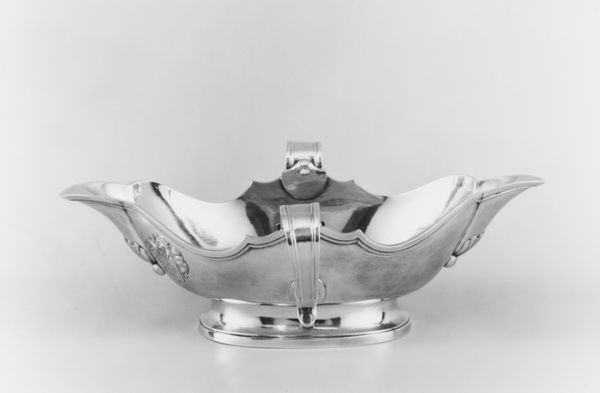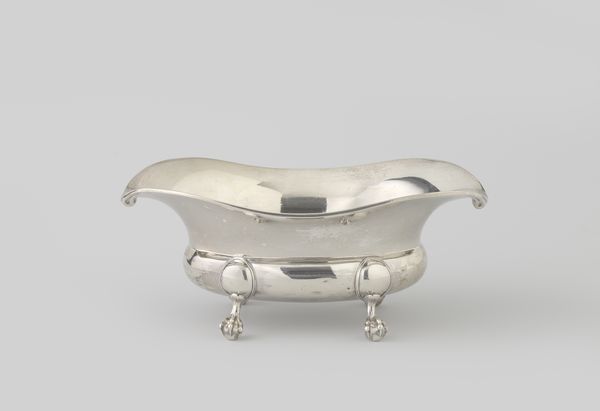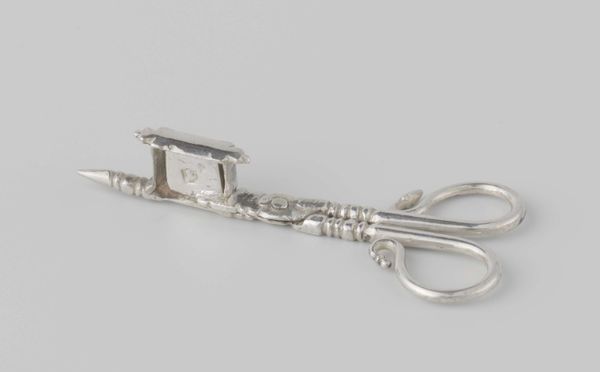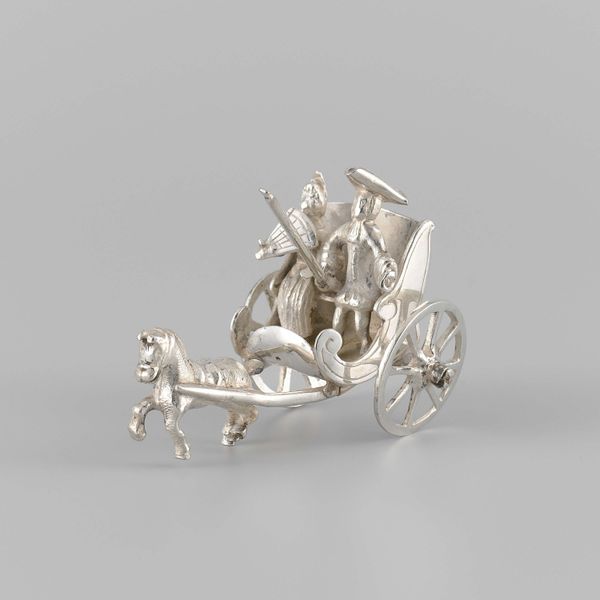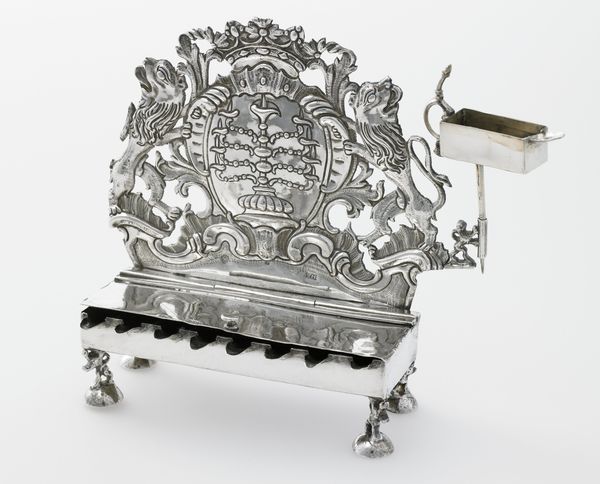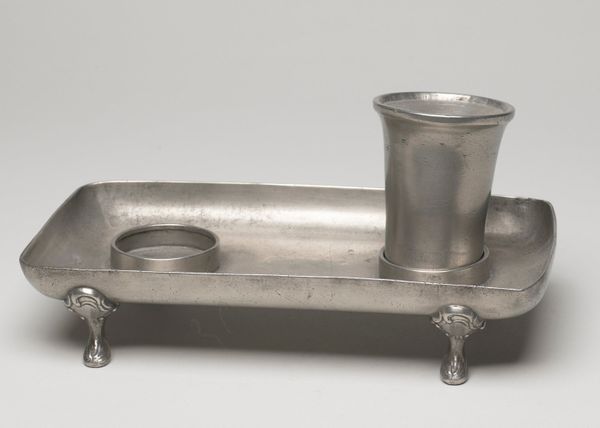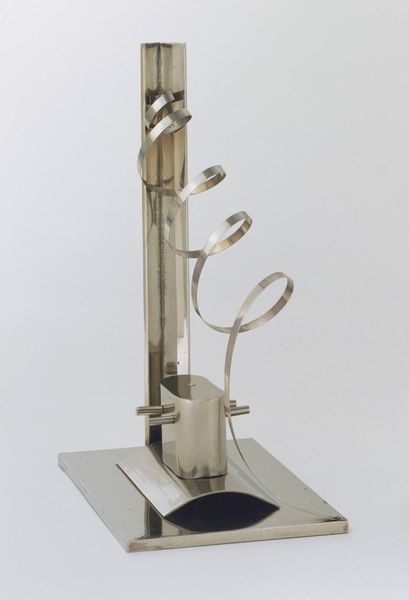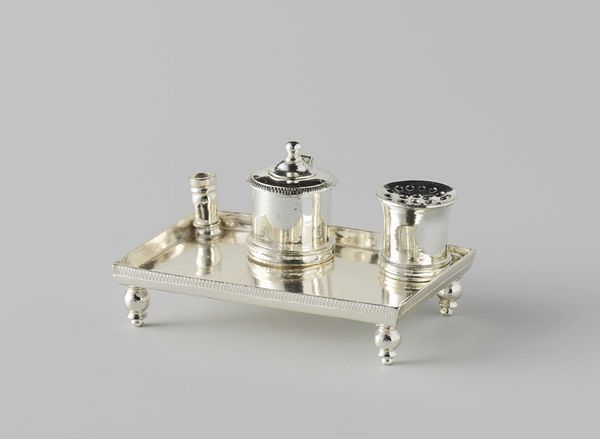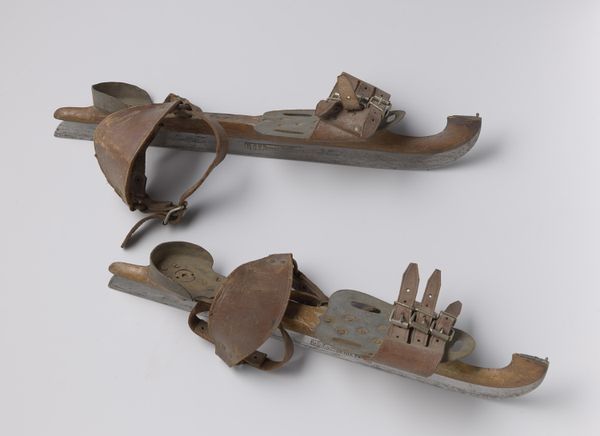
silver, metal, engraving
#
silver
#
metal
#
decorative-art
#
engraving
#
rococo
Dimensions: Snuffer: 17.4 × 5.9 cm (6 7/8 × 2 3/8 in.); Tray: 20 × 9.1 cm (7 7/8 × 3 9/16 in.)
Copyright: Public Domain
Curator: What an elegant piece. Here we have Joachim Martin’s “Candle Snuffer with Tray," created around 1751. It’s crafted from silver and showcases delicate engraving. Editor: My initial impression is how contradictory it feels. It’s a tool associated with ending, snuffing out light, but executed with such ornate and almost celebratory detail. It is not functional-looking. Curator: Exactly. Think about the ritual of extinguishing candles in the 18th century. Candlelight was precious. Snuffing a candle marked the end of an evening, a transition from activity to rest, but also of reflection in this case, given the tray. It speaks volumes. Editor: And this particular piece being rendered in silver…silverware carried significant weight, status in European society, didn’t it? Curator: Absolutely. Silver served as a display of wealth and sophistication. Even the seemingly mundane act of putting out a candle could be elevated. The Rococo style with all its flourish certainly adds to that, embedding this object within a courtly sphere. Editor: It’s intriguing how an object seemingly designed to end something, becomes a symbol of cultural and economic power. One can't ignore it becomes almost paradoxical. Are we invited to meditate about "endings" being celebrations or sad events? Curator: Yes, objects like this also show us that even something as simple as snuffing out a light was a ritual laden with symbolic value and reflective of the prevailing cultural trends. This era experienced candlelight differently from how we know light nowadays: darkness was perceived as another space and the use of these type of silvered instruments becomes meaningful, reflecting cultural beliefs of the era. Editor: Considering this piece helps us connect with past meanings behind very common light instruments helps think that all art has a very similar function in time, whether it intends it or not. Curator: A great consideration and one of the powerful elements behind historical objects as sources for knowledge, absolutely. Thank you. Editor: Thanks to you. It certainly gives new weight to the expression "burning the candle at both ends".
Comments
No comments
Be the first to comment and join the conversation on the ultimate creative platform.

